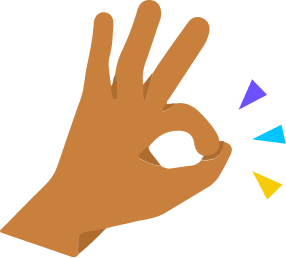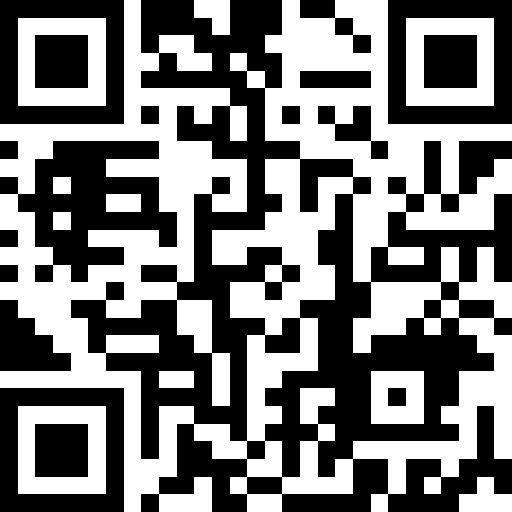Title Page
-
Site conducted
-
Work center / task being inspected
-
Conducted on
-
Prepared by
-
Co-Auditor, if applicable
General Information
-
Description of work to be performed.
-
Number of affected teammates.
-
Are rotation or rest breaks provided throughout the workday?
-
Does work scheduling minimize excessive overtime that causes fatigue?
Workstation - Design and Layout
-
Are teammates able to change postures while working?
-
Are teammates able to reach comfortably?
-
What is the distance that teammates must reach FREQUENTLY while working to reach tools, parts or the workstation?
-
Frequent reaches should be limited to a maximum of 14.25 inches.
-
What is the distance that teammates must reach INFREQUENTLY while working to reach tools, parts or the workstation?
-
Infrequent reaches should be limited to a maximum of 20 inches.
-
What is the distance that teammates must reach OCCASIONALLY while working to reach tools, parts or the workstation?
-
Occasional reaches should be limited to a maximum of 28 inches.
-
Height of the workstation or the work surface from the floor.
-
PRECISE work should be 1 1/2 to 2 1/4 inches ABOVE elbow height. LIGHT work should be 2 to 4 inches BELOW elbow height. HEAVY work should be 8 to 16 inches BELOW elbow height.
-
While working, do teammates have raised shoulders, a rounded back, or a strained neck?
-
Are teammates standing or seated while working?
-
Does the chair have a back support?
-
Does it have lumbar support?
-
Does the chair have armrest?
-
Are they able to be adjusted in height by the teammate
-
Is the chair's height able to be adjusted by the teammate?
-
Are the teammates feet able to be supported on either the floor or a foot support?
-
Does the chair have a cushion for the teammate to sit on?
-
Is anti-fatigue matting available for teammates to stand on?
-
Are walking and working surfaces clean and dry?
-
Are working surfaces unobstructed?
-
Are walking/standing/seated surfaces even?
-
The repetition referred to means doing the same motions or using the same muscles repeatedly with minimal opportunity for rest and recovery. The appropiate work rest cycle should be based on the speed of the work, variety of the task, force required to work, posture while working, and the body region being used to perform the task(s).
-
Do teammates have to twist their torso to perform their work?
-
How often do teammates need to twist their torso to perform work per hour?
-
What is the activity level involved?
- Low - consistent, conspicuous long pauses, or very slow motions
- Medium - slow steady motion or exertion, frequent brief pauses
- High - rapid steady motions or exertions, no regular pauses
-
Do teammates need to rotate, bend forward (flex), or tilt back (extend) their neck to perform their work?
-
How often do teammates need to rotate, bend forward (flex), or tilt back (extend) their neck to perform their work per hour?
-
What is the activity level involved?
- Low - consistent, conspicuous long pauses, or very slow motions
- Medium - slow steady motion or exertion, frequent brief pauses
- High - rapid steady motions or exertions, no regular pauses
-
Are teammates’ shoulders in a non-neutral position (rotated or raised) repeatedly or for a prolonged period?
-
How often are teammates’ shoulders in a non-neutral position (rotated or raised) repeatedly or for a prolonged period per hour?
-
What is the activity level involved?
- Low - consistent, conspicuous long pauses, or very slow motions
- Medium - slow steady motion or exertion, frequent brief pauses
- High - rapid steady motions or exertions, no regular pauses
-
Do teammates need to bend their back forward, backward, or side to side repeatedly or for prolonged periods to perform their work?
-
How often do teammates need to bend their back forward, backward, or side to side repeatedly or for prolonged periods to perform their work per hour?
-
What is the activity level involved?
- Low - consistent, conspicuous long pauses, or very slow motions
- Medium - slow steady motion or exertion, frequent brief pauses
- High - rapid steady motions or exertions, no regular pauses
-
Are teammates’ elbows or forearms pressed against a surface or sharp edge in the workstation?
-
Do teammates need to rotate their forearms repeatedly or for prolonged periods to perform their work?
-
How often do teammates need to rotate their forearms repeatedly or for prolonged periods to perform their work per hour?
-
What is the activity level involved?
- Low - consistent, conspicuous long pauses, or very slow motions
- Medium - slow steady motion or exertion, frequent brief pauses
- High - rapid steady motions or exertions, no regular pauses
-
Are teammates' hands or wrists in an awkward posture (not in a neutral position) repeatedly or for prolonged periods while performing their work?
-
How often are teammates' hands or wrists in an awkward posture (not in a neutral position) repeatedly or for prolonged periods while performing their work per hour?
-
What is the activity level involved?
- Low - consistent, conspicuous long pauses, or very slow motions
- Medium - slow steady motion or exertion, frequent brief pauses
- High - rapid steady motions or exertions, no regular pauses
Displays and Equipment
-
Do teammates need to stare at monitors or displays for long lengths of time?
-
Are the monitors or displays located directly in front of the teammate and between 0 and 35 degrees lower than their horizontal line of sight?
-
Optimal monitor placement to avoid eye strain.
-
Are the controls designed or located to be used by both right- and left-handed teammates?
-
Are the controls designed or positioned to be easy to operate without causing stress to the fingers, hands, or wrists?
Tools (complete for each tool used)
-
Type or name of the tool being used.
-
Approximate weight of the tool.
-
Do teammates need to overreach for the tool(s) repeatedly or for prolonged periods?
-
Is the tool designed to be used by both left-handed and right-handed teammates?
-
Are the handles of the tool shaped so the wrist remains straight where possible (e.g., pistol shaped, or in-line handle)?
-
Does the tool fit well in the hand and not dig into the palm?
-
Does the tool handle have a smooth, non-slip surface?
-
Does the tool handle allow for safe use without slipping, cutting, or applying pressure (pressure points) to the hand(s)?
-
Is the tool being used away from the body or above shoulder height?
-
The tool weight should be less than 5 pounds.
-
Is the tool being used overhead?
-
The tool should be supported if it weighs more than 5 pounds.
-
Is the tool being used for precision work?
-
The tool should weigh less than 1 pound.
-
Does the tool require sustained gripping force to hold the weight of the tool?
-
Is the tool unbalanced when holding (i.e. tool motor causes the tool to want to rotate or tip forward when being held by the hand).?
-
Types of grip.
-
What type of grip does the tool require? (refer to the diagram above).
- Key
- Three-finger
- Two-finger
- Power (thumb and fingers wrapping around the gripped surface)
- Hook (curled four-finger effort)
-
Does the tool require frequent use of a single finger?
-
Does the tool vibrate?
-
Type of vibration caused?
-
How many hours per day does the teammate use the tool?
-
Duration.
- Low - consistent, conspicuous long pauses, or very slow motions
- Medium - slow steady motion or exertion, frequent brief pauses
- High - rapid steady motions or exertions, no regular pauses
Work environment - Temperature
-
Is the work area climate controlled?
-
The idea working temperature is 68 to 76 degrees F.
-
If work takes place where thermal stress is an issue, teammates can experience over exposure to heat or to cold. Teammates could experience increased or decreased blood flow, less strength capability (which results in greater muscle demand), less coordination, discomfort, fatigue, slippery hands (from excess sweating), dry mucus membranes, static electricity, muscle contractions, neuralgia, or chills.
Work environment - Lighting
-
Is the lighting adequate for the task(s) being performed?
-
Does the lighting create reflections or glare on work surfaces, monitors, gauges, or other objects that could adversely affect teammates?
-
Recommended Lx (Lux) range
Work environment - Effects of noise on performance
-
Is the work environment over 85 dBA for an 8-hour time weighted average?
-
Do teammates have to raise their voices or shout to communicate to one another?
-
Are all audible warning signals able to be clearly heard?
-
Ability to understand speech.
-
Noise can cause fatigue and a loss of concentration that affects efficiency (a decrease in work output) and performance (an increase in the number of work errors). Work involving learning is more susceptible to disruption from noise than routine work.
Material Handling - Carrying
-
Do teammates need carry objects to perform their work?
-
What item(s) must be carried?
-
What is the approximate weight of the item?
-
How far do teammates have to carry the item?
-
How do teammates carry the item?
-
Please explain.
-
How often do teammates carry the item per hour?
-
Is them item large or awkward to carry?
-
Does the item have sharp, rigid or cutting edges?
Material Handling - Pushing/Pulling
-
Do teammates have to push or pull items?
-
What item(s) must be pushed or pulled?
-
What is the approximate weight of the item being pushed or pulled?
-
How far do teammates have to push/pull the item?
-
How often do teammates have to push/pull the item per hour?
-
How do teammates push/pull the item?
- Manually (sliding/or scooting) - one handed
- Manually (sliding/or scooting) - two handed
- Manually (sliding/or scooting) - team
- Conveyor
- Motorized cart (powered pallet jacks etc.)
- Manual pallet jack
- Cart
- Table with casters or rollers
- Other
-
Please explain.
-
Which type of grip is required for teammates to push/pull the item?
- Key
- Three-finger
- Two-finger
- Power (thumb and fingers wrapping around the gripped surface)
- Hook (curled four-finger effort)
-
Types of grips.
-
Are items stored at waist height?
-
Are items delivered or stored as close as possible to the work area?
Completion
-
Recommendations
-
Overall assessment

















